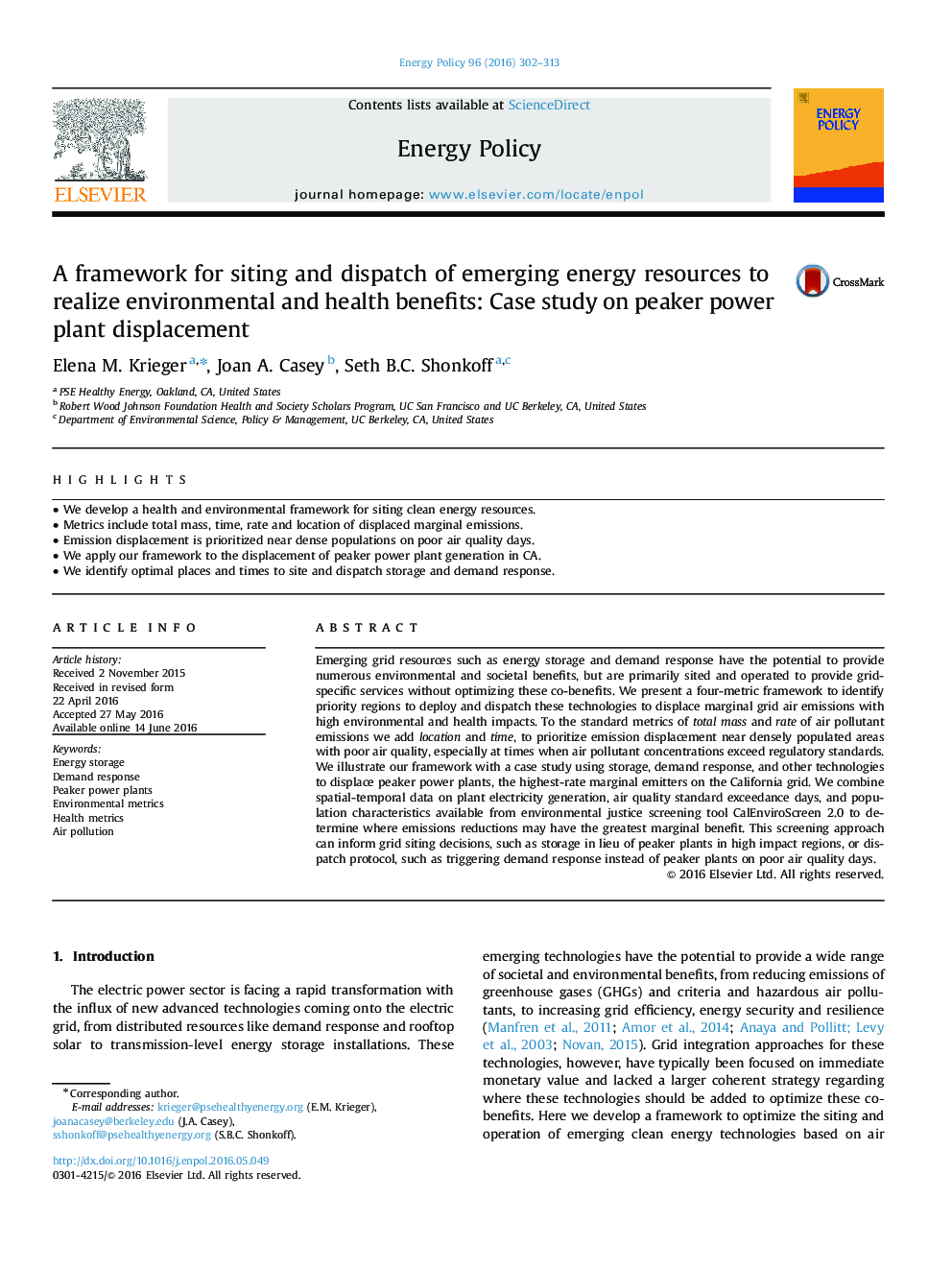| Article ID | Journal | Published Year | Pages | File Type |
|---|---|---|---|---|
| 7398933 | Energy Policy | 2016 | 12 Pages |
Abstract
Emerging grid resources such as energy storage and demand response have the potential to provide numerous environmental and societal benefits, but are primarily sited and operated to provide grid-specific services without optimizing these co-benefits. We present a four-metric framework to identify priority regions to deploy and dispatch these technologies to displace marginal grid air emissions with high environmental and health impacts. To the standard metrics of total mass and rate of air pollutant emissions we add location and time, to prioritize emission displacement near densely populated areas with poor air quality, especially at times when air pollutant concentrations exceed regulatory standards. We illustrate our framework with a case study using storage, demand response, and other technologies to displace peaker power plants, the highest-rate marginal emitters on the California grid. We combine spatial-temporal data on plant electricity generation, air quality standard exceedance days, and population characteristics available from environmental justice screening tool CalEnviroScreen 2.0 to determine where emissions reductions may have the greatest marginal benefit. This screening approach can inform grid siting decisions, such as storage in lieu of peaker plants in high impact regions, or dispatch protocol, such as triggering demand response instead of peaker plants on poor air quality days.
Related Topics
Physical Sciences and Engineering
Energy
Energy Engineering and Power Technology
Authors
Elena M. Krieger, Joan A. Casey, Seth B.C. Shonkoff,
